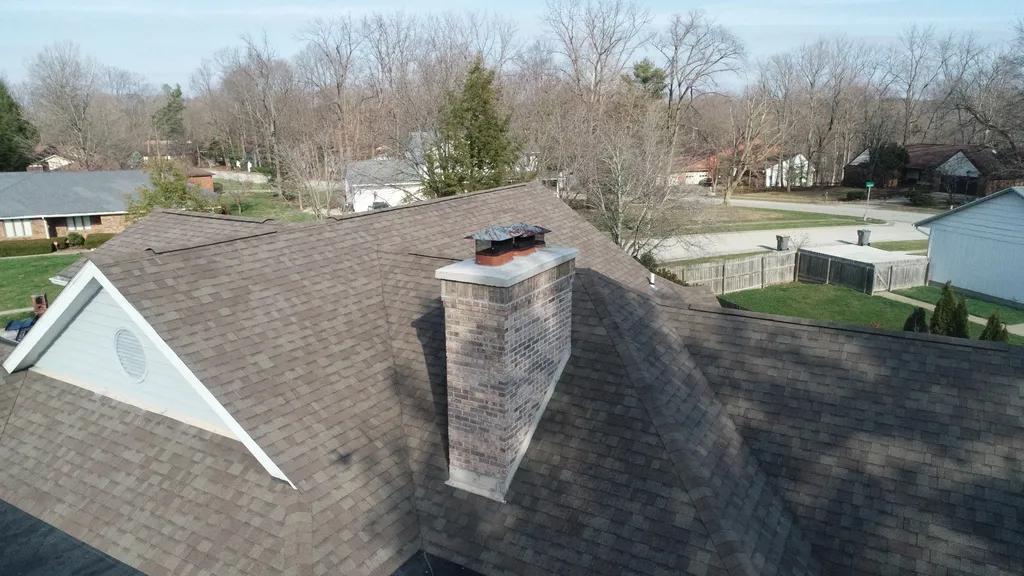Fireplaces are a cherished feature in many homes, providing warmth and ambiance during the cold winter months. However, one common issue that can arise is rain leaking into the fireplace, causing damage and safety concerns. In this article, we will explore effective strategies for preventing rain from infiltrating your fireplace, ensuring both the longevity and functionality of this beloved household fixture.
Table of Contents
- Common Causes of Rain Leakage into Fireplaces
- Importance of Proper Chimney Maintenance
- Key Strategies for Preventing Rain Infiltration
- Professional Recommendations for Ensuring a Dry Fireplace
- Q&A
- The Conclusion

Common Causes of Rain Leakage into Fireplaces
One of the most is a damaged chimney cap. Chimney caps are designed to prevent water from entering the chimney, but over time they can become cracked or damaged, allowing rain to seep through. Another common cause is deteriorated chimney flashing. Chimney flashing is the metal or other material that seals the intersection between the chimney and the roof. If the flashing is corroded or missing, water can easily make its way into your fireplace.
To prevent rain from leaking into your fireplace, it is important to regularly inspect and maintain your chimney cap and flashing. Additionally, make sure your chimney is properly sealed and waterproofed to protect it from moisture. Investing in a chimney cover can also help keep rain out of your fireplace. By taking these preventive measures, you can avoid the hassle and potential damage caused by rain leakage into your fireplace.

Importance of Proper Chimney Maintenance
Rainwater leaking into your fireplace can cause significant damage to your chimney and home. Proper chimney maintenance is essential in preventing this issue. Regular inspection and cleaning of the chimney can help identify any potential leaks and address them before they become a major problem.
Here are some key points to consider in preventing rain from leaking into your fireplace:
- Install a chimney cap to keep rainwater out.
- Check for any cracks or damage to the chimney structure.
- Ensure proper sealing of the chimney to prevent water penetration.
- Clear debris or blockages from the chimney to allow water to drain properly.

Key Strategies for Preventing Rain Infiltration
One of the biggest challenges homeowners face is preventing rainwater from leaking into their fireplace. This can cause damage to the interior of the fireplace and surrounding areas, as well as create safety hazards. To avoid these issues, it’s important to employ some .
One effective strategy is to install a chimney cap. A chimney cap is a metal covering that sits on top of the chimney, preventing rainwater from entering the flue. This simple but essential accessory can also keep out birds, debris, and pests. Additionally, checking the chimney cap regularly for any damage or blockages is crucial for its proper functioning. Another strategy is to ensure that the flashing around the chimney is properly sealed and in good condition. Flashing is a thin layer of waterproof material that prevents water from seeping into the joints between the chimney and the roof. Regular inspection and maintenance of the flashing can help prevent rain infiltration and potential water damage.

Professional Recommendations for Ensuring a Dry Fireplace
It is crucial to take preventive measures to ensure that rainwater does not leak into your fireplace, causing damage and potential safety hazards. Here are some professional recommendations to help you keep your fireplace dry:
- Install a Chimney Cap: A chimney cap is designed to prevent rainwater from directly entering the flue opening. It also keeps out animals, debris, and helps improve overall chimney draft.
- Check the Chimney Flashing: Make sure that the chimney flashing, the metal pieces that seal the gap between the chimney and roof, are properly installed and in good condition. Damaged flashing can lead to water leaks.
- Inspect the Masonry: Regularly inspect the mortar and bricks of your chimney for any cracks or gaps. Water can seep through these openings, causing internal damage.
| Recommendation | Importance |
|---|---|
| Install a Chimney Cap | High |
| Check the Chimney Flashing | Medium |
| Inspect the Masonry | High |
Q&A
Q: Why does rain leak into a fireplace?
A: Rain can leak into a fireplace due to poorly maintained chimney caps, damaged flashing, or cracked chimney crowns.
Q: How can I prevent rain from leaking into my fireplace?
A: To prevent rain from leaking into your fireplace, regularly inspect and maintain your chimney caps, flashing, and chimney crowns. Additionally, consider installing a chimney rain cover or waterproof sealant.
Q: What are the consequences of rain leaking into a fireplace?
A: When rain leaks into a fireplace, it can lead to water damage, mold growth, and deterioration of the chimney structure.
Q: How often should I inspect my chimney to prevent rain leaks?
A: It is recommended to inspect your chimney at least once a year, preferably before the rainy season, to ensure it is in good condition and prevent leaks.
Q: Can a professional chimney sweep help prevent rain leaks into a fireplace?
A: Yes, a professional chimney sweep can inspect and clean your chimney, as well as identify and address any potential issues that may lead to rain leaks.
The Conclusion
In conclusion, taking the necessary steps to prevent rain from leaking into your fireplace is crucial for maintaining its structural integrity and preventing potential damage. By implementing the strategies outlined in this article, such as installing a chimney cap, repairing any cracks in the chimney, and ensuring proper drainage around the fireplace, you can effectively protect your home and fireplace from water intrusion. Regular maintenance and inspections are essential in preserving the functionality and longevity of your fireplace. Remember, a little prevention goes a long way in avoiding costly repairs in the future. Thank you for reading and happy fireplace maintenance!


